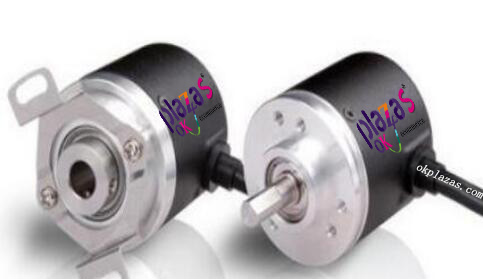Optical encoder classification
Optical encoder classification
Optical encoder classification
Photoelectric encoders mainly include incremental encoders, absolute encoders, hybrid absolute encoders, resolvers, sine-cosine servo motor encoders, etc., including incremental encoders, absolute encoders, and hybrid absolute encoders. Encoders are digital encoders, and resolvers and sin-cos servo motor encoders are analog encoders.

1. Incremental encoder
The incremental encoder can convert the displacement into a periodic electric signal, and then convert this electric signal into a counting pulse, and know its position through the counting device. The characteristic of the incremental photoelectric encoder is that each output pulse signal is corresponding to an incremental displacement, but the increment at which position cannot be distinguished by the output pulse. It can generate a pulse signal equivalent to the displacement increment, and its function is to provide a sensing method for the discretization or increment of the continuous displacement and the displacement change (speed). It is relative to a reference point. The position increment cannot directly detect the absolute position information of the axis. Generally speaking, the incremental photoelectric encoder outputs A and B pulse signals with a 90° electrical angle between each other (the so-called two sets of orthogonal output signals), so that the direction of rotation can be easily judged. At the same time, there is also a Z-phase mark (indication) pulse signal used as a reference mark, and only one mark signal is sent out every time the code wheel rotates one circle. The mark pulse is usually used to indicate the mechanical position or to clear the accumulated amount.
2. Absolute encoder
Each position of the absolute encoder corresponds to a certain digital code, so its indication is only related to the start and end positions of the measurement, and has nothing to do with the middle process of the measurement. Its position is determined by the reading of the output code. When the power is disconnected, the absolute encoder is not separated from the actual position. When the power is turned on again, the position reading is still current. Absolute encoders can directly output large digital quantities. There will be several code channels on the code disc, and the number of code channels is the binary digit. Each bar code track is composed of light-transmissive and opaque fan-shaped areas, and signals are collected by using photoelectric sensors. A light source and a photosensitive element are respectively arranged on both sides of the code disc, so that the photosensitive element can perform level conversion according to whether the light signal is received or not, and output a binary number. And output different digital codes in different positions. Thus, the absolute position can be detected. But the resolution is determined by the number of bits in the binary, which means that the accuracy depends on the number of bits. Advantages: The absolute value of the angle coordinates can be read directly, there is no cumulative error, and the position information will not be lost after the power is cut off. The anti-interference characteristics of the encoder and the reliability of data are greatly improved.
Three, hybrid absolute encoder
Hybrid absolute encoder, it outputs two sets of information: one set of information is used to detect the magnetic pole position, with absolute information function; the other set is exactly the same as the output information of the incremental encoder.
Four, resolver
Resolver is abbreviated as resolver, which is an AC-controlled motor that works on the variable coupling principle. Its secondary (secondary) output voltage has a definite functional relationship with the rotor angle. Composed of high-performance silicon steel laminates and enameled wires with special electromagnetic design, it is heat-resistant and vibration-resistant compared to encoders using photoelectric technology. Adaptability to harsh working environments such as impact resistance, oil stain resistance, and even corrosion resistance.
Five, sine cosine servo motor encoder
The sine-cosine servo motor encoder is composed of a photoelectric code disk with a shaft in the center, on which there are ring-shaped and dark engraved lines, which are read by photoelectric transmitting and receiving devices, and obtain four sets of sine wave signals to form a sine-cosine servo motor encoding The servo drive can achieve high-precision subdivision without high-frequency communication, which reduces the hardware requirements. At the same time, because of the single-turn angle signal, the servo motor can start smoothly and the starting torque is large.





